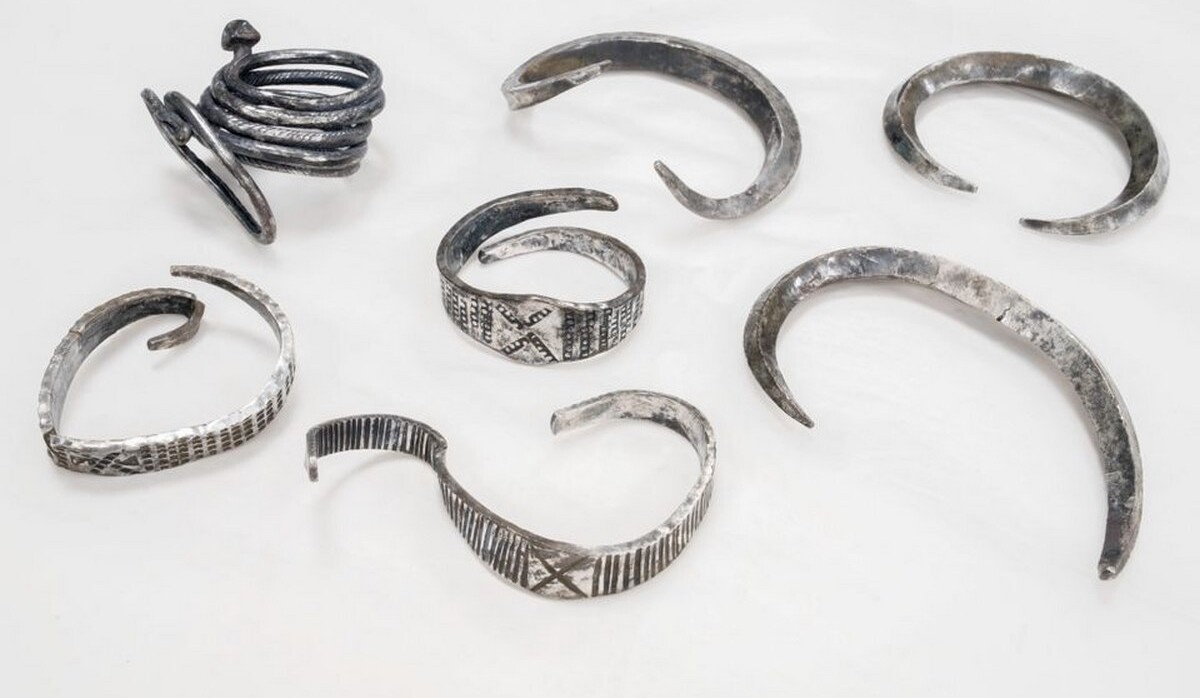Immerse yourself in the thrilling saga of a 22-year-old Danish student, Gustav Bruunsgaard, who recently joined the ranks of metal detectives unearthing Viking treasures. His adventure took place in the historic terrain around Aarhus, a Danish city where remnants from the Viking Age are often discovered.
His heart must have been pounding with anticipation as his metal detector started beeping, signaling the presence of something beneath the earth’s surface. And rightly so, for he was about to uncover a silver bracelet or arm ring. But the story doesn’t end there. Returning later in the week, Gustav discovered another six bracelets, collectively weighing just over a pound of silver.
These precious findings were reported to the Moesgaard Museum in Højbjerg, where they are now on display for all to admire. The museum experts believe these rings date back to the early 9th century – a time that would have been considered the “good old days” by Viking standards.
The early 9th century was a time when raiding Norsemen terrorized various regions including Ireland, Scotland, England, France, Belgium, and some of the earliest Russian principalities along the Volga River. The local authorities were too weak and decentralized to mount any meaningful defense against these invaders.
“The Elsted farm treasure is a fantastically interesting find from the Viking Age, which connects Aarhus with Russia and Ukraine in the east and the British Isles in the west,” said Kasper H. Andersen, a historian at the museum. This statement emphasizes how Aarhus served as a central hub in the Viking world, spanning from North Atlantic to Asia.
All this raiding and trading generated significant profit for the Vikings. Silver was their measure of value during this age. The seven bangles discovered by Gustav weighed more than half a kilo and were adapted to a common weight system. This made it easy to determine the value of individual rings, which served as a means of payment and transaction and also demonstrated the financial capacity of the owner.
It’s believed that these buried bracelets represent a hoard of hack silver. After silver coins were minted in Constantinople, Europe, and the Arab world, hack silver served as a common medium of exchange. Rings like the ones Gustav found were used as reference weights so that pieces of looted silver could be “hacked” apart into the correct size for trading practices.
So why not share this fantastic find with your friends who love Vikings? You never know, it might inspire them to embark on their own treasure-hunting adventure!
Source: Good News Network






Leave a Comment